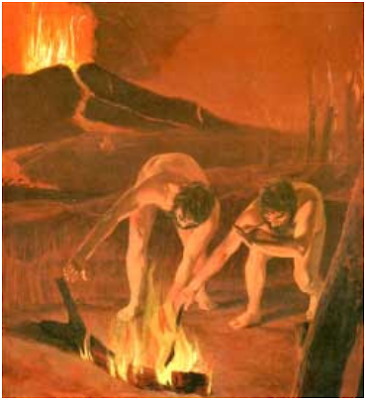What is Technology?
The word Technology [1] was first used by Jacob Bigelow in 1829, to discuss the application of sciences to the useful arts. It can also be defined as “knowledge and skills available to any human society”. Technology is a broad term that refers both to artifacts created by humans, such as machines, and the methods used to create those artifacts. Technology can be used to refer to a way of doing something or a means of organization. Technology is created by humans, tools, machines and appliances: methods of doing something. Humans find problems in life, then they create a solution. As needs change, humans develop and build on old designs. Technology is everything created by humans, and not by nature.
Technology did not always mean Ipods, DVDs and the Internet. For thousands of years, it was the means by which people secured food and shelter, established social orders, shaped and sustained the cultures. Technology has shaped the way people thought and interacted throughout history, in both a local and national sense. We can consider the appearance of the first signs of technology 50.000 ago, with the use of tools that many archaeologists connect to the emergence of modern languages. The earliest stone tools appeared 40.000 years ago. Fire was controlled by the Homo Erectus about 500.000 years ago. Other technological advances involve clothing and shelter. The New Stone age (known as Neolithic period) includes the invention of stone axes which were used for forest clearing. These lead to the appearance of agriculture as an important change in the lives of people, and an important technological advance. Although agriculture was much more difficult than hunting at first, growing dependence on it allowed ancient societies to build more stable settlements, that could support more people.
The Neolithic Revolution was a means for people to acquire food, which changed the behavior pattern of our cave cultures and better helped them to sustain themselves. By 3000 BC, some groups of Southwestern Indians had already begun to grow corn. The rise of agriculture allowed these people to form permanent settlements. Metal tools replaced the stone, which eventually led to the discovery of bronze and brass (4000 BC). Iron and steel date to 1400 BC.
The Egyptians introduced the first complex technological advances, such as the use of wind power in the sailboat. They also used the flood from the Nile to irrigate their lands. The wheel was invented around 4000 BC, in the Mesopotamia region. The oldest wooden wheel in the world was found in the Ljubljana marshes of Slovenia. The use of the wheel as a transformer of energy (through water wheels, windmills and treadmills) revolutionized the application of nonhuman power sources.
This small introduction leads us to understand that the word “Technology” is misused, or misrepresented. When we think of technology we think mainly about Information Technology. The Internet, Computers, the Iphone, Ipad… You would never imagine the wheel to be technology, but in fact it represented one of the major technological innovations in history!!! NeXT, a recount of historical technological developments will help us understand better the world that we are living in today.





No comments:
Post a Comment